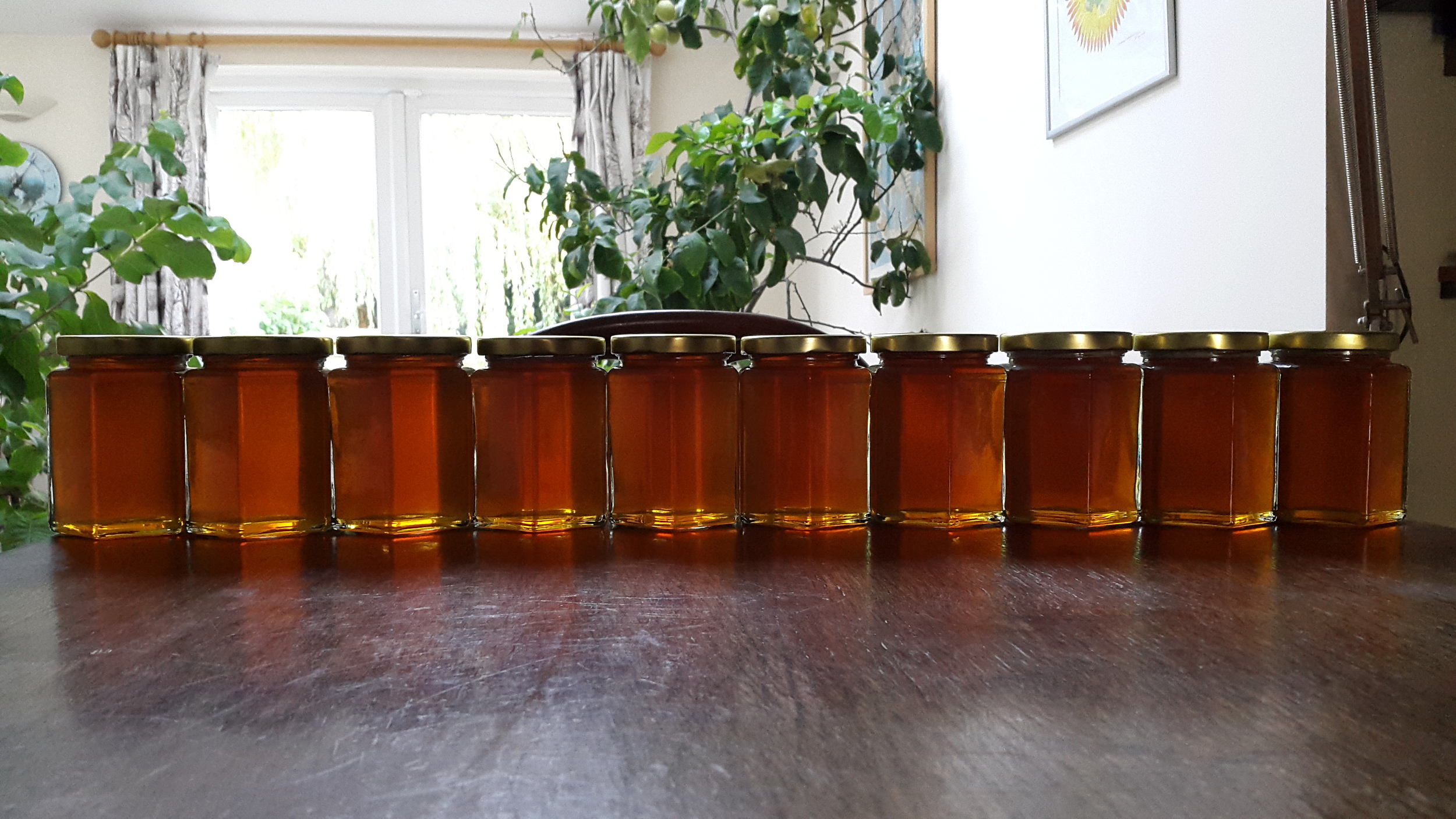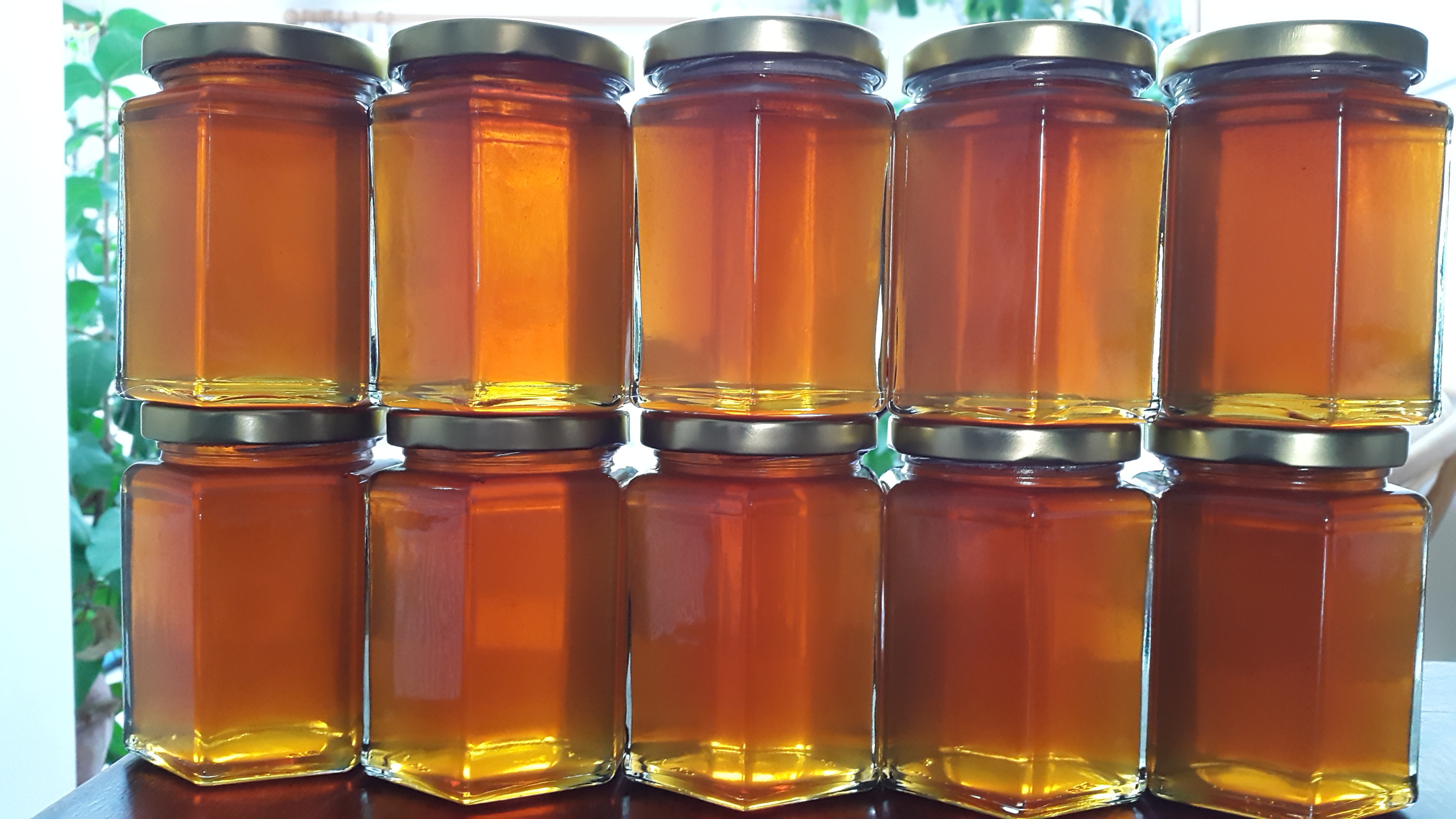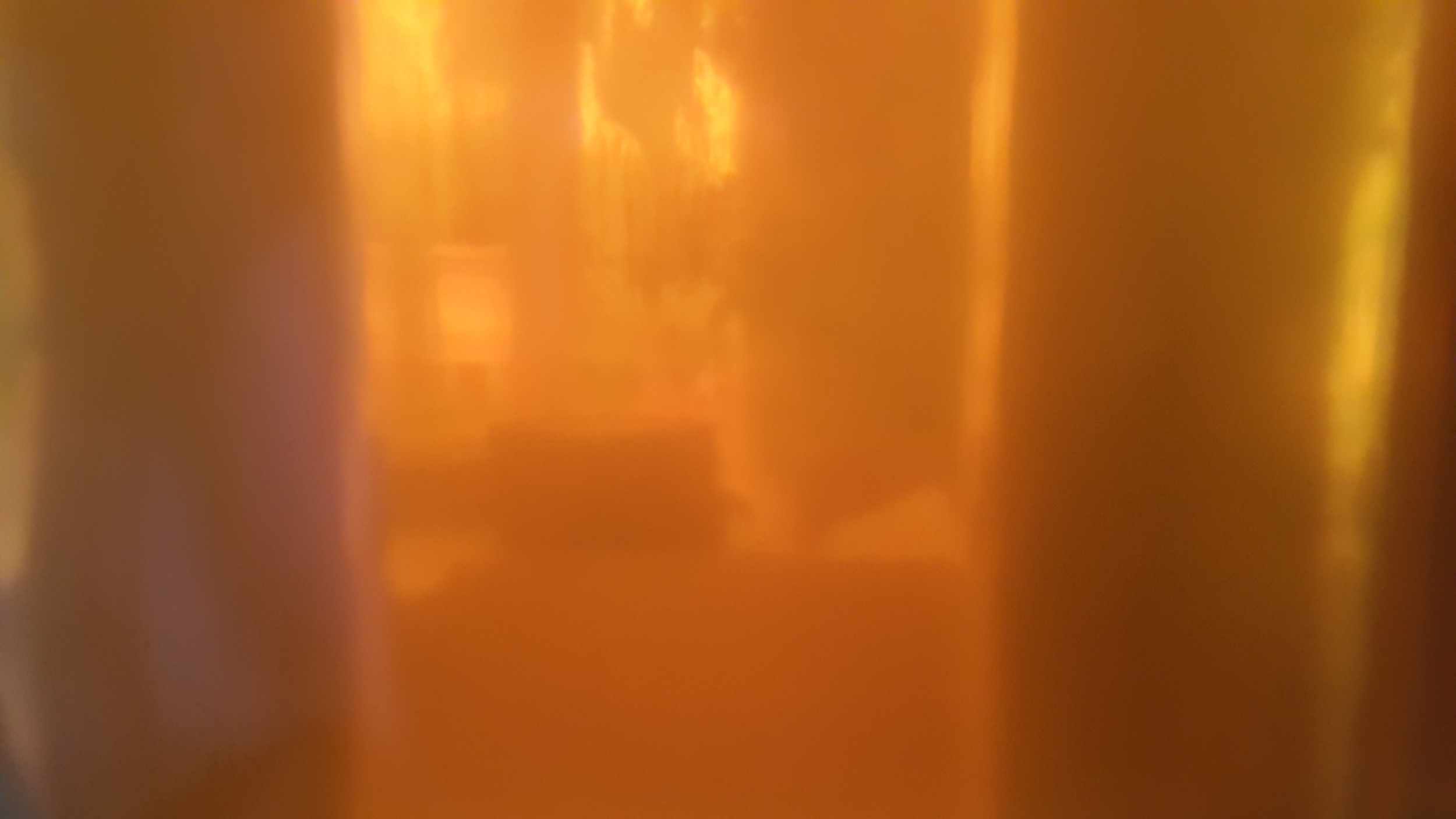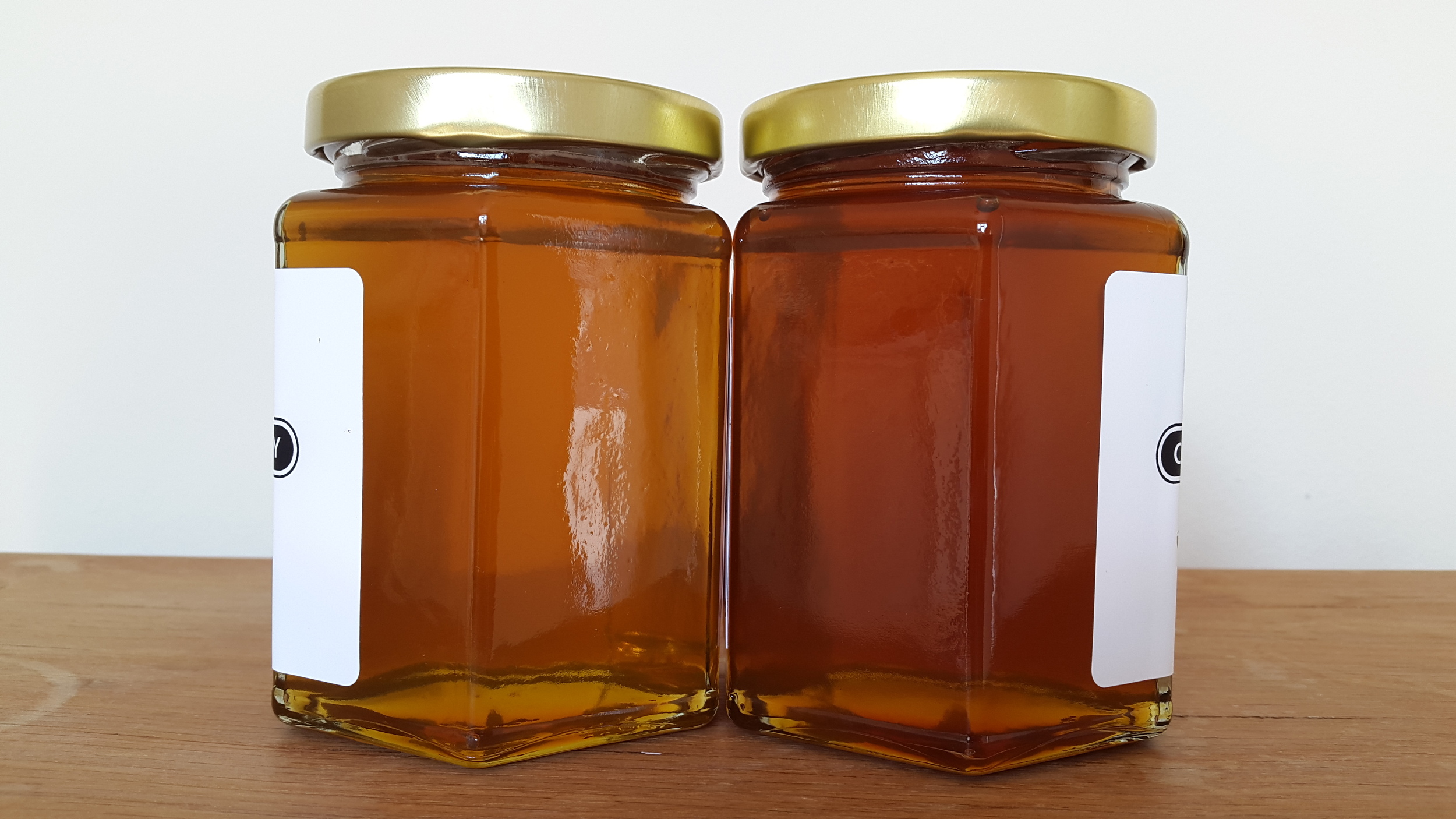Propolis is the reddish brown sticky resin that bees stick things together with, bung up gaps with, and strengthen wax with. Apparently they collect it from trees. I have seen propolis foragers in the hive - on their rear legs where the pollen basket is they have a dollop of propolis like a bead of glue.
One of the wonderful things about propolis is its scent. It is ylang ylang, vanilla, a pine forest on a hot day, and a glass of mulled wine. And it emits a toasted version of these scents when burnt with a blowtorch, which enlivens the task of sterilising a second hand hive or flame-cleaning a queen excluder.
Propolis is said to have antiseptic qualities. So when cleaning the Smith Hive in preparation for storage, I decided to "harvest" the propolis off it and make a tincture.
Except, I didn't get round to it for a couple of weeks. The propolis scratchings stayed in their jug at the back of the fridge, covered in cling film. Today I went back to it. In the history of science, this is how serendipitous discoveries are made. What I discovered is: propolis doesn't smell so good after it's been in the fridge for a couple of weeks. The heady and complex scent that I raved about above had changed - vanilla was still there, perhaps more so, but now it had taken on a sickly creaminess. My nose was disappointed.
Anyway, this meant there was less to lose by experimenting with tinctures. I poured vodka (40 % abv) into the jug. Not much happened. The propolis didn't dissolve. A few bits of dried grass and beeswax separated out and floated to the top. The propolis stayed at the bottom. The vodka turned slightly yellow.
A cautious sip...the taste is initially earthy, and there's the ylang ylang, then an after-taste reminiscent of plasticine. Not as bad as I feared. I shall leave it to develop in the jug for another couple of weeks and we'll see what happens.
As pictured here, you can see that the garden is a mess, but we enjoy a nice Sunday breakfast watching the bees.
It is late Summer and the availability of forage in the garden (for the bees at least) is reducing, but there are still some flowers around. The bees' favourite thing is the Echinops:
And they continue to forage on the remaining raspberry flowers, but most of those are now turning to fruit:
The bees are on watermint:
This forager was collecting pollen from a Japanese anemone. Look at that nice full pollen basket:
The Smith bees made this honey during the second half of July and the beginning of August. It's different from the earlier honey. Similarly runny, but darker, and with a rounded silky taste. Imagine olive oil and chocolate.
There were swathes of thistles flowering on Stourbridge Common at the time this honey was being made, so I think there must be a good proportion of thistle honey in here.
We extracted 4 frames, which filled 10 jars. The other frames were not fully capped, and have been returned to the bees.
The Smith bees have produced a magnificent crop of honey.
Read More
The Virginia creeper growing on the front of the house is dense with honeybees. The flowers are small, and it's only because the plant buzzes so loudly with bees that I notice it flowering at all. I wonder whether visitors notice the humming of bees around the front door.
July is a good time of year for foraging honeybees. Stourbridge Common and Ditton Meadows are within 200 m of the apiary, and the bees are busy there. Here's what we found them foraging on:
Thistles
Thistles are a source of abundant nectar, if the scent of honey in the air around them is anything to go by.
Bramble
It seems early this year - July blackberries! In the second picture (click on the image to expand it), you can see a full pollen basket on the worker's leg.
Himalayan balsam
If you can find the honeybee in this picture, you might be able to see that the back of its thorax is white with pollen from the plant. The bees enter the flowers, stay inside for a couple of seconds, then reverse out.

























